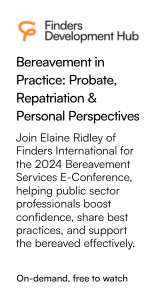Orders protecting against risk of FGM should be “focused, targeted and proportionate” to specific risks established, says High Court judge
- Details
The High Court has discharged a Prohibited Steps Order (PSO) made to protect a now teenage girl against the risks of Female Genital Mutilation (FGM), after finding “no evidence” of an ongoing risk of FGM to the girl, and finding that the order continued to have a “profound impact on her competing rights and freedoms”.
Outlining key lessons from the case, Ms Justice Harris noted that indefinite orders are “highly draconian” and should only be made in the “most exceptional of cases”.
She said: “Whilst a protective order is in place, it remains incumbent on the local authority to continue to support the family, including facilitating direct work with the child as is appropriate to the child's age, to improve their understanding and insight into the risks and harms of FGM. The objective must be to reduce or remove the risk to obviate the need for the order remaining in place.”
The case concerned M, who is now 17 years old.
In 2010, M was made subject to a child protection plan due to concerns around sexual abuse in the wider family. It was as a result of the investigations that a risk of M being subjected to FGM came to the local authority's attention, and protective orders were sought.
The family were closed to the local authority in 2014, but the protective orders continued.
M’s mother, AS, sought to discharge the Prohibited Steps Order (PSO) made by DHCJ Mrs Allison Russell QC (as she then was) which:
- prevented the parents from obtaining a passport or travel documents for M;
- prevented the parents from removing M from the jurisdiction of England and Wales.
The judge observed: “It is one of the notable and concerning features of this case that nobody has a full copy of that order, neither the parents, the Local Authority nor the Court. It appears to be a PSO under the CA 1989 and not an order under the Female Genital Mutilation Act 2003 and was made for indefinite duration without any mechanism for review.”
Outlining the background to the case, the judge noted that the applicant mother and her elder three daughters, have all undergone FGM.
She said: “It is accepted that FGM was a cultural norm in Somalia and widely practised amongst their family and community.”
M's three older sisters all underwent FGM in 2005 in Yemen. The procedure was arranged by their maternal grandmother whilst they were living under her guardianship and care. The applicant mother was living in the United Kingdom at the time, having left Yemen in 2004 to seek asylum in the United Kingdom.
The judge noted that the mother maintained she has “always been opposed” to FGM on the basis it caused her significant harm and distress, and from which she has ongoing health issues.
The mother submitted that the maternal grandmother arranged for the girls to undergo FGM without notifying her or seeking her consent.
During the hearing, the judge considered evidence from a single joint expert.
The expert, in her assessment, found M to be a mature 16-year-old, who displayed “profound” knowledge and confidence about the risks associated with FGM.
The expert also noted that M had an “informed stance” on the issue and presented as “independent, confident and well versed in her rights, and fully able to advocate for herself”.
As regards to the mother, the expert found her to have enhanced her knowledge and understanding of FGM since the PSO was made, and assessed her as being fully able to safeguard M.
The expert explained that FGM in Somalia is usually performed on girls below the age of 10 with their mother or grandmother's consent. Once a girl reaches puberty, the girl's direct consent would be sought.
She noted that it is “unheard of” in Somali culture for a 17-year-old to be forced to undergo FGM.
Considering the evidence, the judge said: “[The expert]'s risk assessment was, in my judgment, professionally and appropriately conducted. It was undertaken in the Somali language allowing for cultural nuance in the discussion. [The expert] engaged with M, her parents, her older sister, a paternal aunt who lives in London and the maternal grandmother. It was thorough, cogent and robust.”
The local authority did not accept the assessment and the expert's recommendations, and contended that the PSO should remain in place until M is 18 years old.
Outlining the position of M, the judge said: “In her statement to the Court, M says that she has felt trapped for years; she has not been able to experience what her friends and siblings have been able to experience. She describes being made to feel like an outcast, and that she does not belong to this society. She notes in striking terms that the local authority have exerted so much power over her life without ever understanding her, or her religion. She feels it amounts to an abuse of power.”
Discharging the PSO, Ms Justice Harris concluded: “There is no evidence of ongoing risk of FGM to M, whilst the order continues to have a very profound impact on her competing rights and freedoms.
“Placed within the framework of the Children Act 1989, it is clearly in her best interests for the order to be discharged.”
Finally, the judge went on to outline the following observations about the manner in which orders protecting against the risks of FGM should be dealt with going forward:
- Such applications should be made under the Female Genital Mutilation Act 2003 which provides a framework and structure for decision-making;
- Care should be taken that orders are focused, targeted and proportionate to the specific risks established;
- Indefinite orders are highly draconian and should only be made in the most exceptional of cases. Orders should ordinarily be time-limited or subject to a process of in-built review. It cannot be left to individual family members, many of whom reside within marginalised communities, to bring matters back before the Court for review;
- Whilst a protective order is in place, it remains incumbent on the local authority to continue to support the family, including facilitating direct work with the child as is appropriate to the child's age, to improve their understanding and insight into the risks and harms of FGM. The objective must be to reduce or remove the risk to obviate the need for the order remaining in place;
- In undertaking assessments of risk whether within proceedings or outside of them, the local authority should at the earliest opportunity identify whether they require expert assistance and support from outside professionals or agencies. It is crucial assessments are made on a sound and properly informed understanding of FGM and the socio-cultural and familial context within which the continuing risk of FGM to women and girls exists;
- Orders should be retained within local authority records whilst they remain in force.
Lottie Winson











































